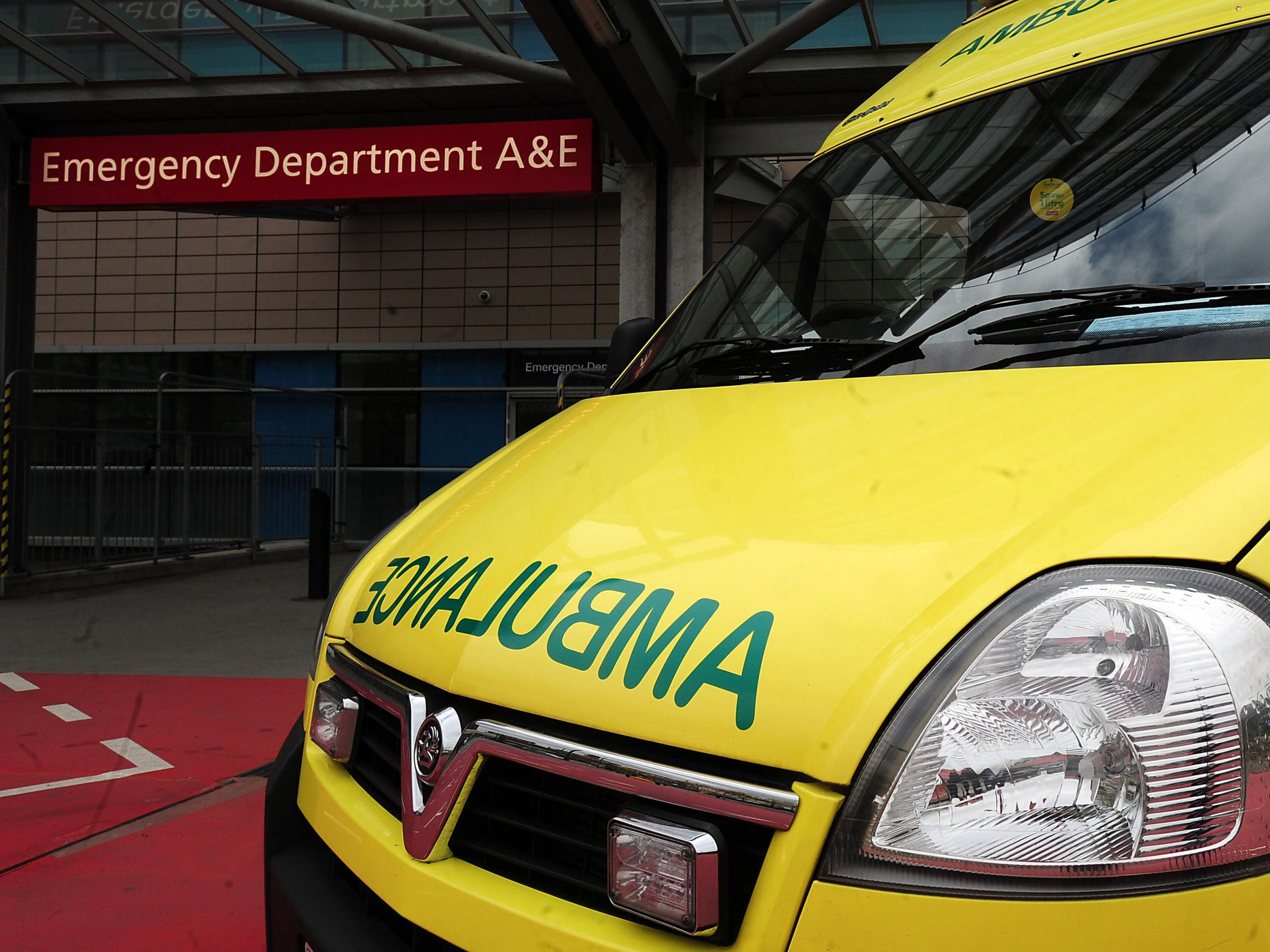Two million wait more than four hours in A&E amid huge increase in 12-hour waits for elderly
Jeremy Hunt has suggested four-hour target for patients to be seen in A&E could be changed

Your support helps us to tell the story
In my reporting on women's reproductive rights, I've witnessed the critical role that independent journalism plays in protecting freedoms and informing the public.
Your support allows us to keep these vital issues in the spotlight. Without your help, we wouldn't be able to fight for truth and justice.
Every contribution ensures that we can continue to report on the stories that impact lives

Kelly Rissman
US News Reporter
Very long waits of more than 12 hours in A&E among elderly people have more than doubled in two years, figures show.
Data from NHS Digital shows a huge jump in the number of long waits among those aged 70 and over – from 34,088 in 2013/14 to 88,252 in 2015/16.
More than two million people of all ages waited over four hours to be seen at A&E departments last year, with 185,017 waits of 12 hours or more in 2015/16 – up from 157,895 the year before and 87,213 in 2013/14.
Of the waits in 2015/16, 56,013 were for people over the age of 80.
The figures come as a leaked memo shows NHS England was warned that patients were at risk of being harmed at a Worcestershire hospital where two patients died on trolleys.
An investigation has been launched into the deaths at Worcestershire Royal's A&E department.
Chris Moulton, vice president of the Royal College of Emergency Medicine, said of the NHS Digital data: “These figures demonstrate that we don't have enough acute hospital beds or enough social care for a growing and ageing population.
“These elderly people are on trolleys, waiting for a bed. These figures are from the time people arrive at A&E and show just how bad things are.”
A memo leaked to the Health Service Journal (HSJ) shows that NHS England held a patient risk summit in Worcestershire 10 days before two patients died on trolleys.
The summit was held due to concerns raised by the Care Quality Commission (CQC) over care at the hospital.
The message to trust staff said summit attendees recognised “we are facing a crisis as our bed occupancy is too high – often over 100 per cent – and this needs to be reduced.
“Despite our best efforts, patients are waiting too long in corridors, putting them at risk of harm, and we know this is of real concern to our staff.”
A spokesman for the trust told the HSJ: “The risk summit took place before the patient deaths and, whilst we considered issues of patient safety, until there is a thorough investigation... we can't say there is a link between them and any pressures.”
Other data published by NHS Digital shows 37 per cent of people going to A&E are discharged with no follow-up needed, while 20% are discharged to their GP and another 20 per cent are admitted to hospital. Monday is the busiest day of the week.
On Monday, Health Secretary Jeremy Hunt suggested he might alter the four-hour target for patients to be dealt with in A&E, saying it should only apply to the most urgent cases.
Hospitals have not hit the target nationally since summer 2015.
Mr Hunt told MPs in the Commons that up to a third of patients do not need to be seen in A&E. In 2014, Mr Hunt took his own children to A&E because he did not want to wait to see a GP.
But Mr Moulton said there were many valid cases among the 37 per cent of people discharged with no follow-up.
He said: “Many people go to A&E departments and leave with the advice and reassurance they need.
“An example is a child who has been taken to A&E with a big lump on their head after falling over.
“We might check them over and say we think they're OK and they are discharged, but that is still a good and valid use of an emergency department's time.
“Even if we did get rid of that 37% of people from A&E, it still wouldn't do anything about these old people laying on trolleys waiting for beds.”
Theresa May's official spokeswoman insisted that Mr Hunt's comments did not mean the Government was abandoning its commitment to A&E patients being dealt with within four hours.
“The point the Health Secretary was making... was about making sure that A&E is there for people for what it says on the tin – accident and emergency,” she said.
“It is not about non-urgent care. Accident & Emergency is for dealing with emergencies and for urgent care, and there is a four-hour target that we want to protect for that.”
The NHS Digital data showed there were 20.5 million attendances recorded at A&E in England during 2015/16.
The number of attendances from April to December increased by 2.2% on the previous year, while those from January to March increased by 12.2%.
Most people go to A&E between 9am and noon every day, but particularly on Mondays.
Join our commenting forum
Join thought-provoking conversations, follow other Independent readers and see their replies
Comments